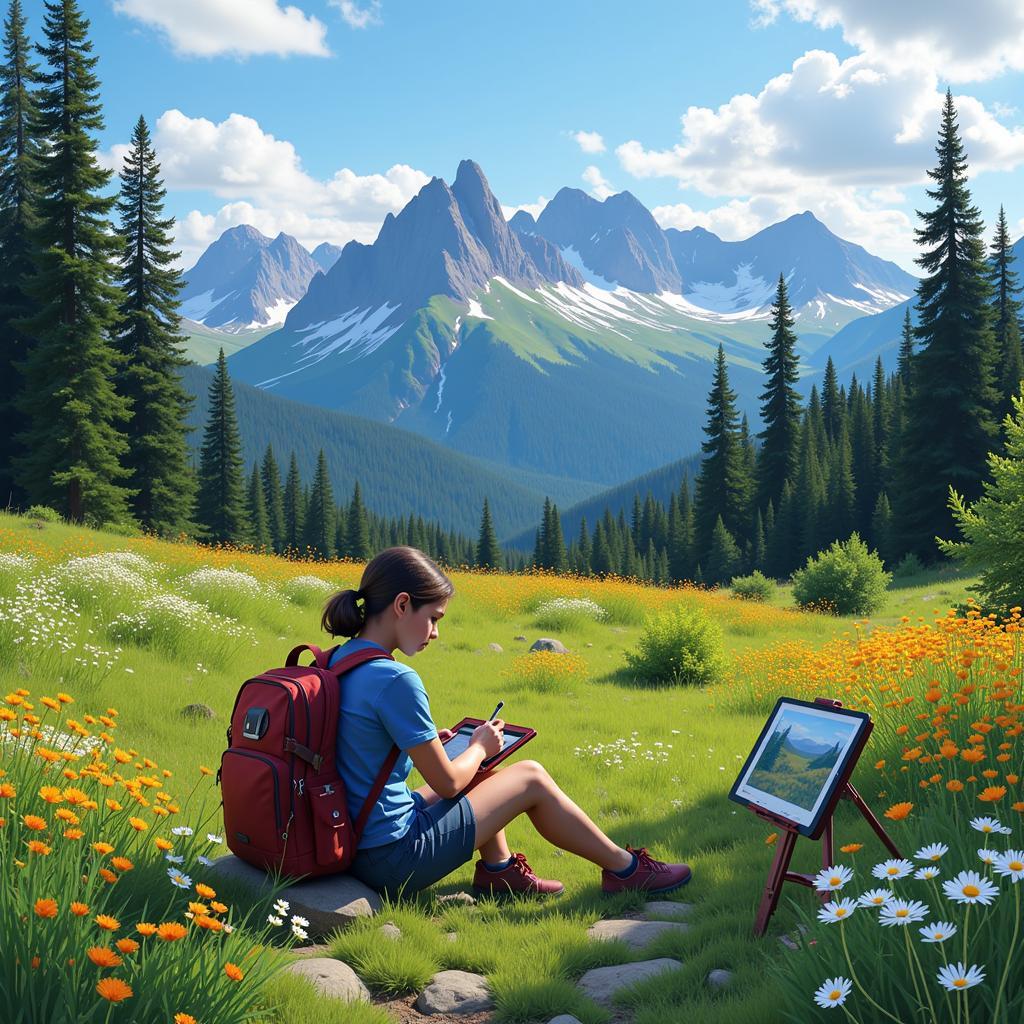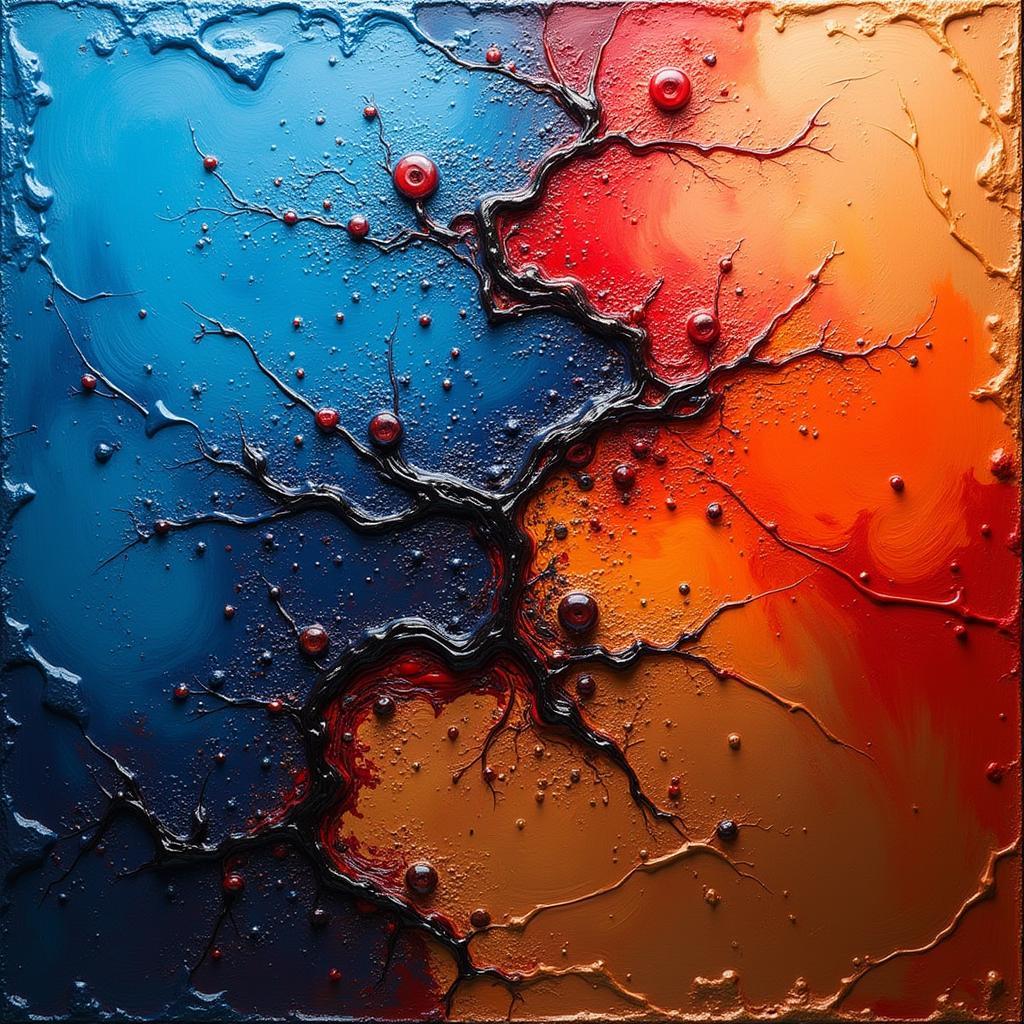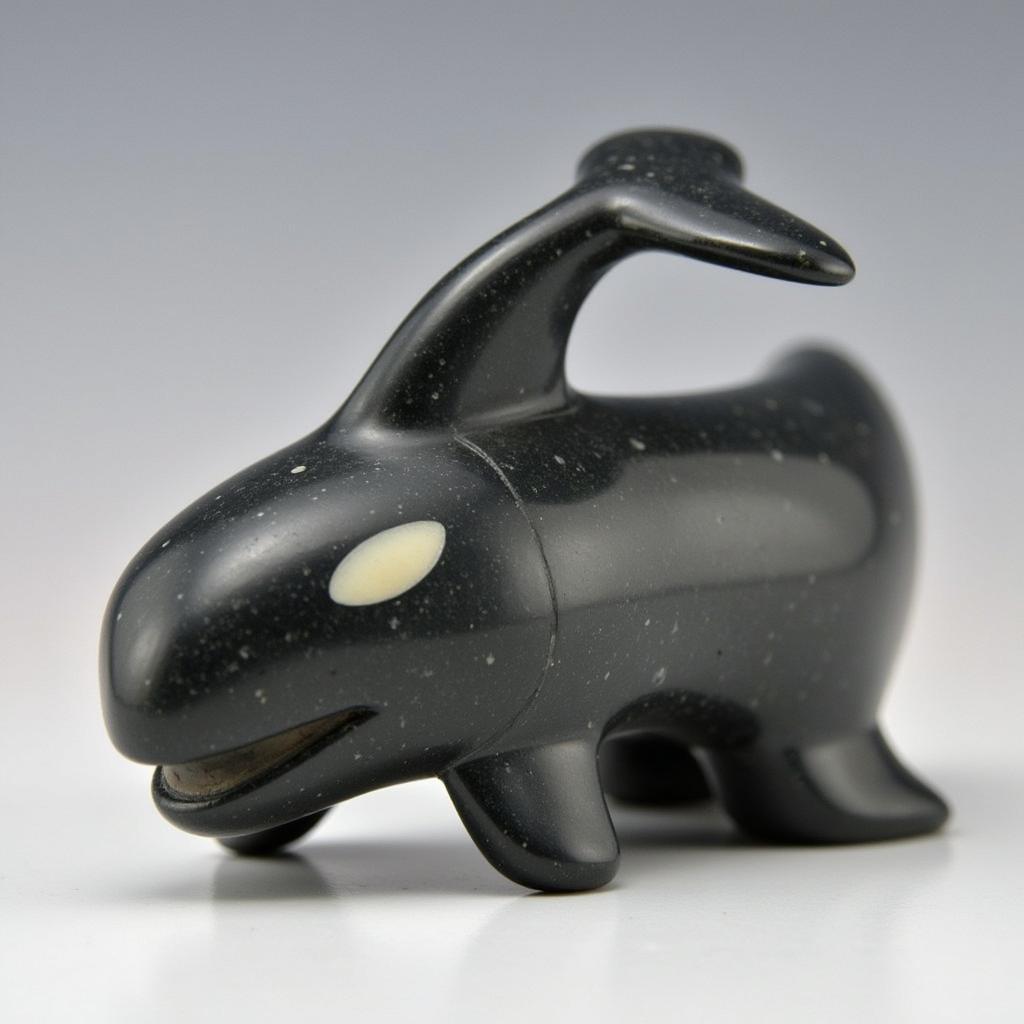The Art of Rock: Exploring the Intersection of Music and Visual Expression
The Art Of Rock isn’t just about the music; it’s a vibrant tapestry woven with visual expression, encapsulating album covers, concert posters, photography, and even fashion. From the psychedelic swirls of the 60s to the gritty punk aesthetic of the 70s and the digital art explosions of today, visuals have always played a crucial role in shaping the rock experience. This exploration delves into how visual art has become an intrinsic part of rock and roll, influencing its identity and resonating with fans worldwide.
The Evolution of Rock’s Visual Language
Rock and roll, from its inception, has been a rebellious and evolving art form. This rebellious spirit naturally extended to its visual counterparts. Early album covers often featured band portraits, aiming to establish their image and connect with audiences. As the genre progressed, so did its visual language. Think of the iconic album art for the Beatles’ Sgt. Pepper’s Lonely Hearts Club Band – a groundbreaking collage reflecting the band’s evolving sound and the era’s burgeoning psychedelia. This era marked a shift, where album art became a canvas for artistic experimentation, mirroring the music’s innovative spirit.
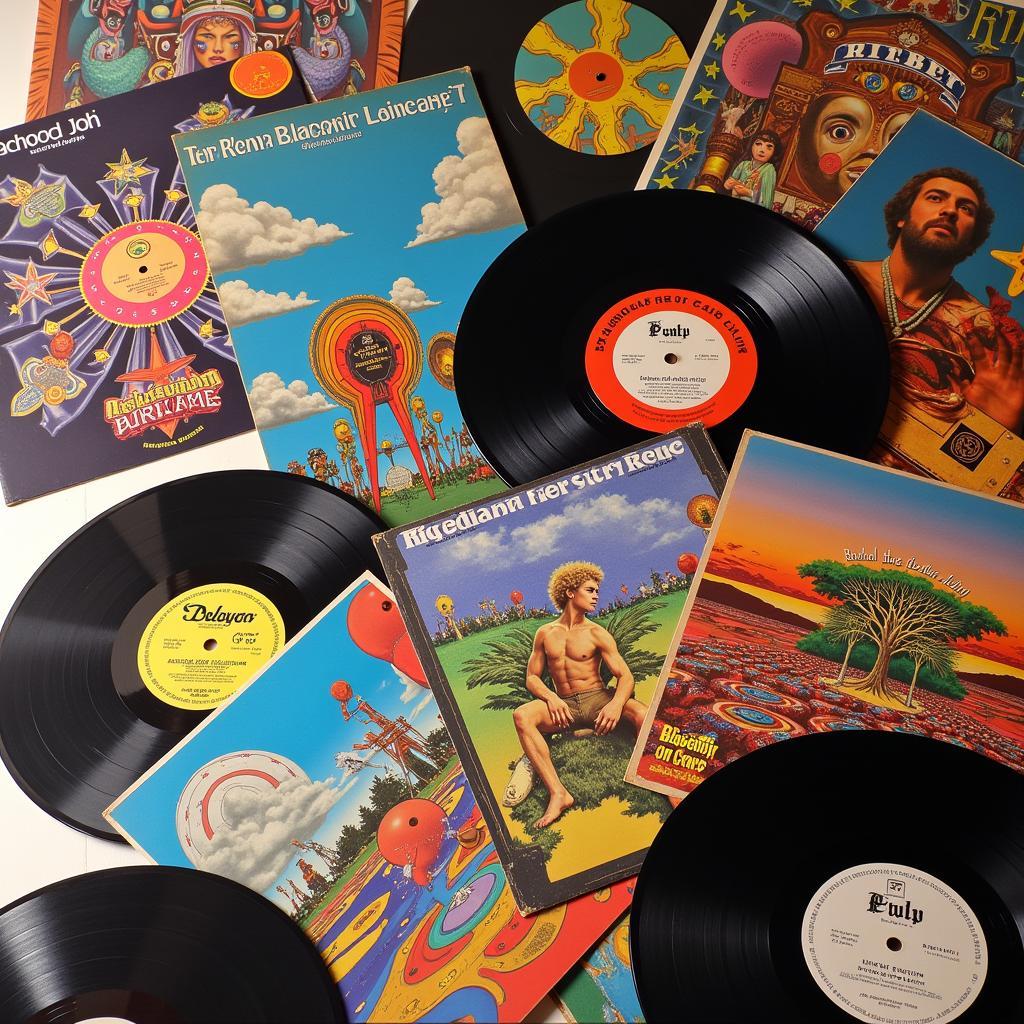 Psychedelic Album Art in Rock Music
Psychedelic Album Art in Rock Music
The punk rock movement embraced a DIY ethos, often utilizing stark imagery, provocative typography, and collage techniques. This raw, unpolished aesthetic perfectly captured the genre’s anti-establishment message. Later, the digital age opened up new possibilities, allowing artists to create complex, layered artwork that pushed the boundaries of traditional design.
The Power of the Album Cover
Album covers are arguably the most recognizable form of the art of rock. They’re more than just packaging; they’re a visual portal into the music’s soul. A great album cover can instantly grab your attention, evoke emotions, and set the stage for the auditory journey within. Consider the enduring impact of the Rolling Stones’ Sticky Fingers cover, designed by Andy Warhol. Its tactile zipper detail became an instant conversation starter and cemented its place in rock and roll history. You can explore similar artistic concepts in the art of rock collection.
The shift from vinyl to digital formats presented a challenge to the art of rock. The smaller screen sizes of digital music players diminished the impact of album art. However, the resurgence of vinyl records in recent years has reignited appreciation for the tangible and visual aspects of music consumption, demonstrating the enduring power of the album cover.
Beyond the Album: Concerts, Posters, and More
The visual experience of rock extends far beyond album art. Concert posters, stage design, and even fashion have all contributed to the genre’s rich visual tapestry. Concert posters, for example, serve as both promotional tools and miniature works of art, capturing the energy and excitement of live music. Think about the vibrant, often hand-drawn posters of the psychedelic era, or the bold, graphic designs associated with punk rock gigs. These visuals build anticipation and become cherished mementos for fans. Castle Rock Colorado Art Festival is a great example of how art can be integrated into a community event.
How to Appreciate The Art of Rock
So, how can you delve deeper into this fascinating intersection of music and visuals? Start by exploring album covers. Take the time to really look at them, consider the artistic choices, and how they relate to the music. Visit museums and galleries that showcase rock and roll photography and artwork. Check out online resources like the art of rock book for deeper dives into the subject. And don’t forget the importance of live music! Pay attention to the stage design, lighting, and overall visual atmosphere at concerts.
“The visual aspect of rock and roll is as much a part of the narrative as the music itself,” says Dr. Melissa Stone, a renowned music historian. “It’s a crucial element that enhances the emotional connection between the artist and the audience.”
The Digital Age and the Future of Rock’s Visuals
The digital age has revolutionized the art of rock, opening up new avenues for creative expression. Digital tools allow artists to create intricate and dynamic visuals that were previously unimaginable. Animation, 3D modeling, and interactive elements are now seamlessly integrated into album art, music videos, and even live performances. This has led to a resurgence of interest in visual art within the rock community.
“The digital landscape allows for a more immersive and interactive experience,” adds Alex Vargas, a prominent digital artist specializing in album art. “It’s an exciting time for visual artists in the rock world.”
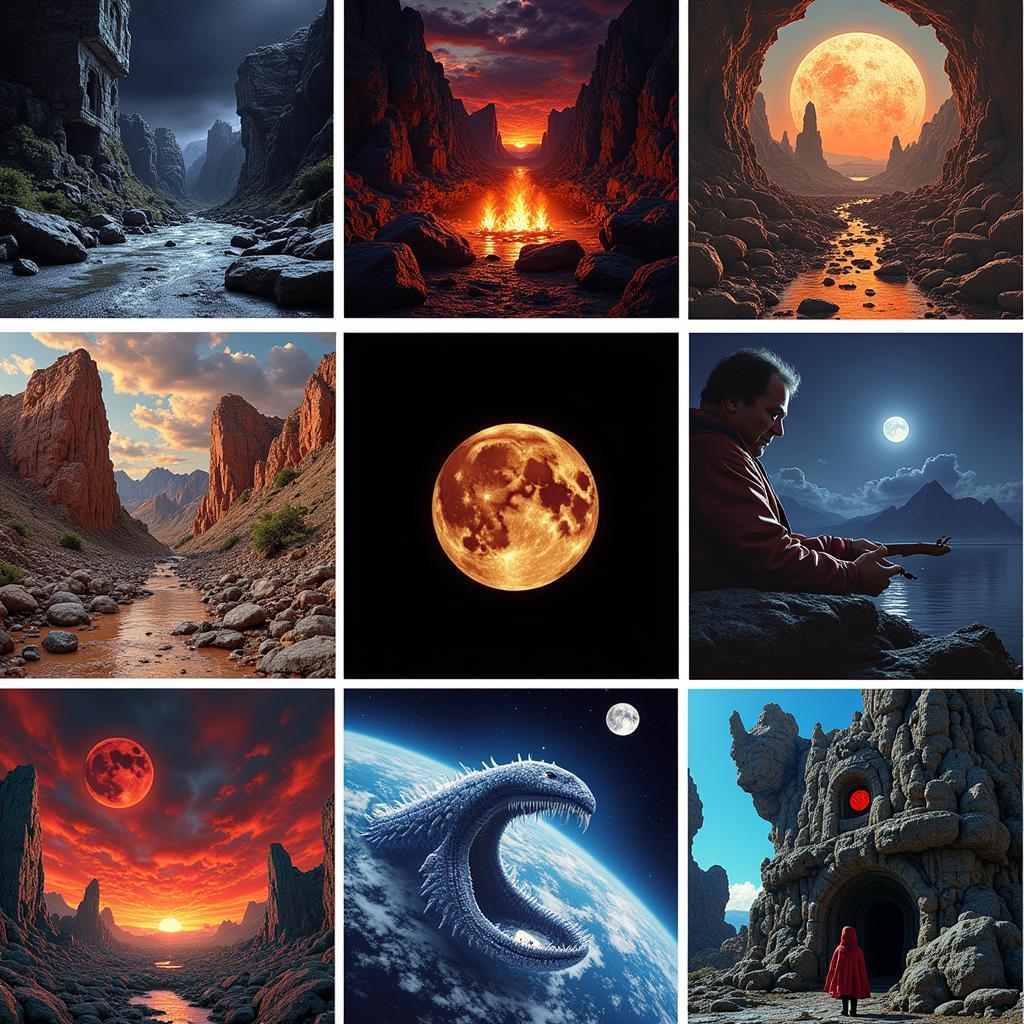 Digital Art in Rock Music Evolution
Digital Art in Rock Music Evolution
The possibilities are endless, and the future of the art of rock promises to be even more visually stunning and engaging. You can find unique rock-inspired artwork at places like Art Reef Rock. Additionally, exploring community-based events like Art on the Rocks Gadsden AL can offer unique perspectives on rock art.
Conclusion
The art of rock is a powerful fusion of auditory and visual experiences. From iconic album covers to innovative digital art, visuals have always been an integral part of rock and roll’s identity. By appreciating the visual language of rock, we gain a deeper understanding and appreciation for the genre’s evolution and enduring power. So, next time you listen to your favorite rock album, take a moment to appreciate the art that accompanies it. You might be surprised at what you discover.
FAQ
-
What is the significance of album art in the art of rock? Album art provides a visual gateway to the music, setting the tone and enhancing the emotional connection.
-
How has technology influenced the art of rock? Digital tools have expanded creative possibilities, leading to more complex and interactive visuals.
-
Where can I find examples of rock and roll visual art? Museums, galleries, online resources, and concert posters are excellent sources.
-
Why is visual art important in rock and roll? It’s a crucial element that contributes to the overall identity and impact of the genre.
-
How can I appreciate the art of rock more fully? Take time to study album covers, explore related artwork, and pay attention to visuals at concerts.
Common Scenarios & Questions
-
Scenario: I’m a musician starting a band and want to create impactful album art. Question: Where can I find resources and inspiration for rock album art design?
-
Scenario: I’m a visual artist interested in working with musicians. Question: How can I connect with bands looking for album art or concert poster designers?
Further Exploration
Explore other articles on our website about the history of rock photography and the influence of graphic design on rock and roll culture.
Call to Action
For any assistance, feel free to contact us. Phone: 02462573573, Email: [email protected]. Visit us at: Savico Megamall, 7-9 Nguyễn Văn Linh Street, Gia Thụy, Long Biên, Hanoi 10000, Vietnam. Our customer service team is available 24/7.
